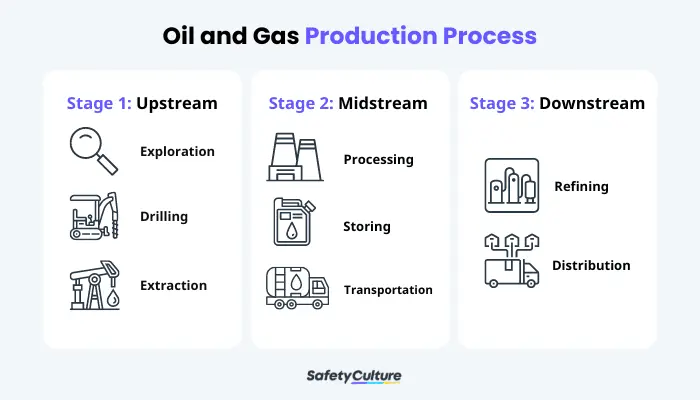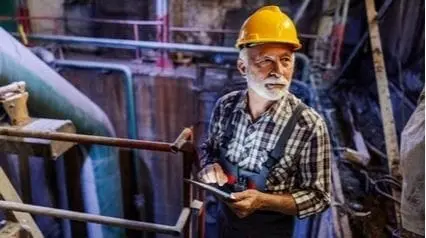What is Oil and Gas Production?
Oil and gas production is the general process of manufacturing oil and natural gas from wells and turning them into the final petroleum products that consumers can use. Oil and gas production includes systematic steps starting from the site exploration, to actual extraction, and even up to the distribution of the products to businesses and the general public.
The oil and gas industry is one of the largest sectors in the world and a huge factor in the global economy. But just like any other industry, it can also be very fragile and prone to volatility. With all the things recently happening between two major oil producers, there’s a call of ramping up oil and gas production to avoid shortages and prevent the prices from increasing further.
President Joe Biden of the United States, the world’s largest oil and gas producer, announced in March 2022 that aside from encouraging the increase of domestic oil and gas production, the country is also releasing 1 million barrels a day from its Strategic Petroleum Reserve to help cut prices across the nation.
Process of Oil and Gas Production
The process of oil and gas production is divided into three major stages namely upstream, midstream, and downstream. Each stage is regulated and laws can vary per locality or state. There are also international agreements that have to be observed and complied with. Learn more about the stages of oil and gas production in the following:

Oil and Gas Production Process
Stage 1: Upstream
Upstream refers to the primary process of the oil and gas production that includes exploration, drilling, and extraction.
Exploration
This is the initial part where geologists and other industry experts search for rock formations or areas where oil and gas are commonly found. After a site is selected, it will be prepared and developed for the actual production process.
Drilling
The well drilling process and timeline can vary depending on the techniques and equipment used in the procedure. Normally, it takes about two to four weeks, but drilling an offshore well can last for several months.
Oil and gas are commonly drilled vertically but using newer technologies offered various advantages such as time-saving opportunities, lesser operating costs, and reduced negative environmental impact. New drilling techniques include: horizontal drilling, multilateral drilling, extended reach drilling, and complex path drilling.
Extraction
Oil and gas extraction generally includes the actual process of extracting conventional oil and natural gas from underground reservoirs and wells. This is also the step where fracking and recycling of fracking fluid is done.
Stage 2: Midstream
As the secondary stage, midstream mostly refers to the processing, storing, and transportation of oil and gas products.
Processing
This is the midstream stage where oil and natural gas are separated, then transferred to the gas processing plants where unnecessary products and nonhydrocarbon gases are removed.
Storing
Proper storage of the products is essential to keep up with the domestic and international demand, prevent shortage and discrepancies in supply, and ensure safety for all the workers and people involved in the industry. Natural gases are usually stored in underground spaces such as depleted reservoirs, while finished oil products, crude oil, and refined oil commonly use above ground tanks as storage.
Transportation
Transportation is an all-encompassing process for the industry. It starts from when oil and gas are extracted and brought to the processing plants, transferred to companies and businesses across the nation and to other countries, and finally to the general public or primary consumers.
Unrefined oil is transported via tankers and pipelines, while final petroleum products travel to the market through trucks, railroad cars, tankers, and more pipelines.
Stage 3: Downstream
Downstream refers to the third stage and final process of refining and distribution of petroleum products.
Refining
Refining is the process of converting oil and natural gas into finished petroleum products that can be used for various reasons such as transportation and electricity fuels, asphalt and road oils, kerosene, or as raw materials for making plastic and synthetic materials.
Oil refining also involves several processes depending on the desired end product. This process commonly includes the units of: distillation, cracking, coking, reforming, and post treatment.
Distribution
As the name suggests, distribution is the final step where the finished petroleum products are transported and distributed to businesses, government agencies, and to the general public composed of industrial consumers, electrical providers, and heating of residential and commercial establishments, among others.
Production Equipment
The oil and gas production is complex and involves multiple processes that are further broken down into smaller steps. This industry also comprises various businesses that have their own roles to play in the stages of upstream, midstream, and downstream. A significant number of oil and gas production equipment is used to ensure an efficient procedure from start to end. Some of the primary industry equipment and assets include:
- Tank vessels – storage tanks and gas condensers
- Heat exchangers – shell and tube, plate, regenerative, and adiabatic wheel heat exchangers
- Evaporators – natural/forced circulation, rising/falling film, climbing and a falling-film plate, multiple-effect, and agitated thin film evaporators
- Air coolers
- Towers
- Steel pipes
- Geophysical prospecting equipment
- Drilling and production equipment
- Refinery and chemical equipment
- Logging equipment
- Offshore engineering equipment
Digitize the way you Work
Empower your team with SafetyCulture to perform checks, train staff, report issues, and automate tasks with our digital platform.
Get Started for FreeNew Technologies Used
Aside from machinery, the oil and gas industry has also seen the benefits that utilizing new technologies can offer to ensure efficiency and maintain safety in production. Some of these advanced technologies include the use of:
- Artificial intelligence – helps oil and gas companies survey facilities, assess the value of reservoirs, monitor machine condition, customize drilling, and complete other plans that would otherwise take time if performed manually.
- Big data analytics – enables companies to collect and analyze data for an informed and well-grounded decision making.
- Internet of things – also known as IoT, this allows companies to use various sensors that are essential in managing operations efficiently. Electronic monitoring (part of IoT), also promotes better field communication and allows real-time data and monitoring of pipes, storage, transportation, and machinery.
- Drones – offers high-level visibility of wells, storage areas, and facilities which speeds up daily evaluations and ensures assessment accuracy.
To summarize, being aware of the processes involved in oil and gas production, as well as integrating new technologies available can help reduce operational and maintenance costs, lessens chances of incidents, improve workplace safety, and offers new insights regarding the industry that can be used to further improve processes and ensure a more efficient way of doing things.




